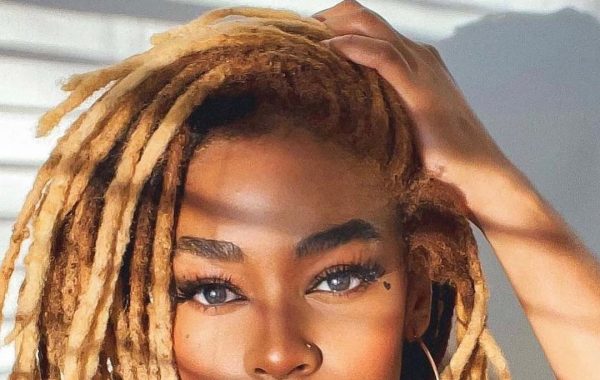
Dreadlocks, sometimes referred to as locs or coils, are an unusual hairdo with a rich cultural heritage. For those of African heritage, they have special meaning, and for many others, they have become a fashionable fashion choice. Beyond their striking appearance, dreadlocks hair journey represents a physical and spiritual transformation.
Understanding Dreadlocks
Dreadlocks, often known as “locs,” are a type of hairstyle defined by purposely or unintentionally tangled hair strands that grow over time. Although dreadlocks are connected to many cultures and groups around the world, African, Caribbean, and Rastafarian customs place special emphasis on them. Dreadlocks have long been associated with spirituality, resistance, and cultural identity, representing a strong bond with one’s ancestry.
Dreadlocks and the Rastafari movement in Jamaica became closely linked in the 20th century. Locs became a symbol among Rastafarians, representing their pledge to live a natural life and their ties to their African roots. Dreadlocks and Rastafarian culture became inextricably linked in the 1970s thanks to the rise in popularity of reggae music and the influence of icons such as Bob Marley.
The Dreadlocks Hair Journey
For many people, choosing to begin their dreadlock journey is a pivotal moment of empowerment and self-discovery. The process of growing dreadlocks is highly personal and transforming, regardless of the inspiration—cultural influences, self-expression, or a desire for change. To see the hair gradually lock and mature over time, one must first commit to patience and effort. There are several methods for starting your locs, each with its advantages. Popular techniques include:
Neglect Method
This is the simplest method, involving minimal manipulation. You just quit brushing your hair and let it fall into tangles on its own. This process can be messy in the early stages and takes the longest for locs to form.
Two-Strand Twist (TST)
Using this technique, divide your hair into small parts and firmly twist each segment from root to tip. Continue doing this throughout your whole head. You have more control over the location and size of your locs when you use this strategy. For longer hair, it might be time-consuming.
Coil Method
This technique, which is akin to TST, entails parting hair and firmly coiling each section around itself from root to tip. This technique works better on shorter hair and can provide a more cylindrical loc form.
Backcombing
This technique entails backcombing particular hair areas to produce a coarse, knotted base that will eventually come loose. To prevent breaking, this technique can be quite hard on hair and needs deft handling.
Interlocking
With a crochet hook, this technique is crocheting stray hairs into already-existing locs. Although this can be time-consuming and damage hair if done too firmly, it produces a neater, more consistent look.
Instant Locs
This technique immediately creates locs that look mature using a crochet hook and extensions. Although this is a speedier solution, it can be costly and cause stress on the hair.
The best loc method depends on hair type, desired size, and patience level, with natural methods requiring less initial maintenance.
The Maturation Phase in The Journey
Locs take time to mature and fully lock up, and during this phase, hair may unravel or frizz easily. To manage this, use natural oils and avoid tight hairstyles. Regular retwisting with a loctician can help maintain even maturation. Also, regular washing with gentle shampoo and occasional deep conditioning can promote healthy hair growth. Remember, patience is the key to embracing the dreadlock journey with its inevitable frizz.
Frequently Asked Questions and Answers About Dreadlocks Hair Journey
1. What are dreadlocks?
Dreadlocks are hairstyles with matted or tangled strands, that represent spirituality, identity, and cultural heritage in various communities worldwide.
2. How are dreadlocks formed?
Dreadlocks can be created through various techniques like neglect, twisting, palm rolling, backcombing, and interlocking, each requiring patience and dedication to achieve distinct strand formation.
3. How long does it take to grow dreadlocks?
The time it takes to grow dreadlocks varies depending on factors such as hair texture, length, and chosen method of formation. On average, it can take several months to a year or more for dreadlocks to fully mature and develop.
4. How do you maintain dreadlocks?
Dreadlock maintenance involves regular shampooing, palm rolling, and occasional sessions to prevent matting while maintaining a healthy scalp and moisturizing hair for overall hair health.
5. Are there cultural implications associated with dreadlocks?
Yes, Dreadlocks hold cultural significance in African, Caribbean, and Rastafarian cultures, symbolizing spirituality, rebellion against societal norms, and connection to cultural heritage and identity.
6. Can anyone get dreadlocks?
Yes, Anyone with suitable hair length and texture can grow dreadlocks, but it’s essential to consider factors like hair type, lifestyle, and maintenance commitment before embarking on the journey.
7. Are there challenges associated with having dreadlocks?
Dreadlocks offer pride and self-expression but also face societal stigma, misconceptions, maintenance requirements, and professional or formal settings’ prejudices due to certain hairstyles.
8. What are the benefits of having dreadlocks?
Once matured, people appreciate dreadlocks for their low maintenance and their connection to heritage and community, as they symbolize cultural pride, individuality, and self-confidence.
Conclusion
Dreadlocks are not just a hairstyle; they can be a lifestyle choice. They require dedication and patience. They can be a rewarding way to express individuality and connect with cultural heritage. To start your loc journey, research, find a skilled loctician, and be patient. With proper care and self-love, your locs will flourish and become a beautiful expression of you.

Leave a Reply